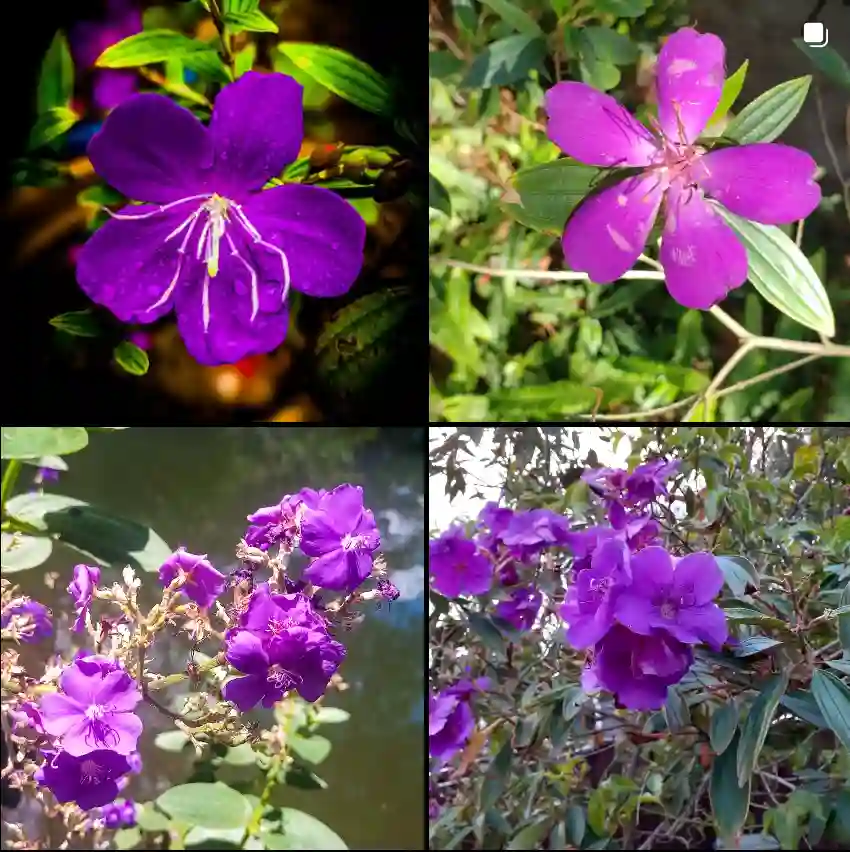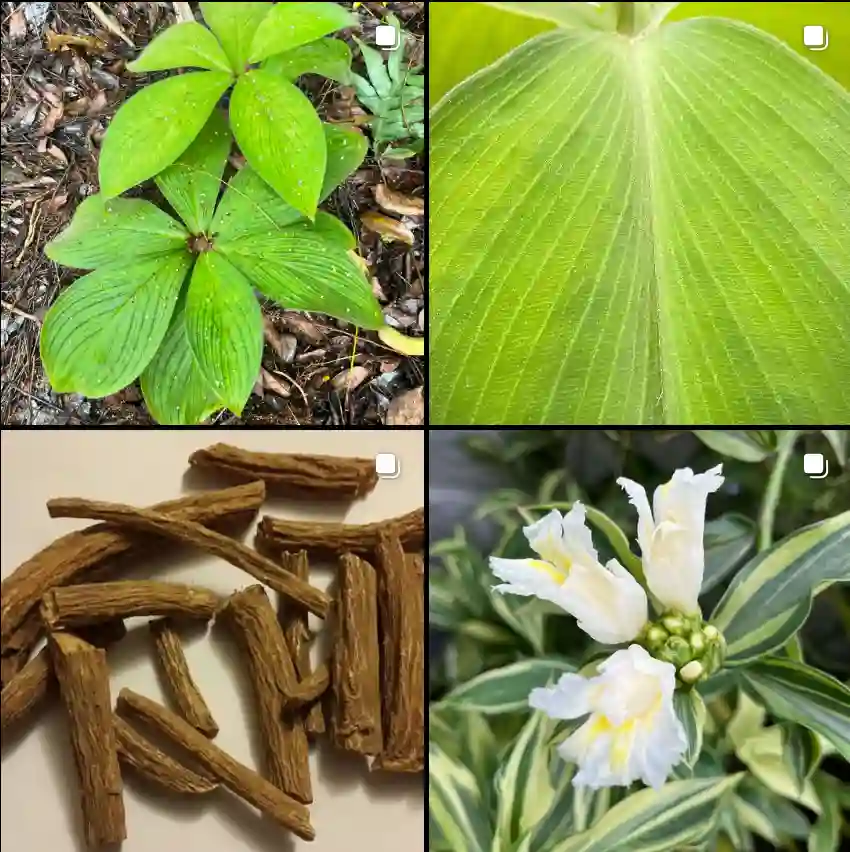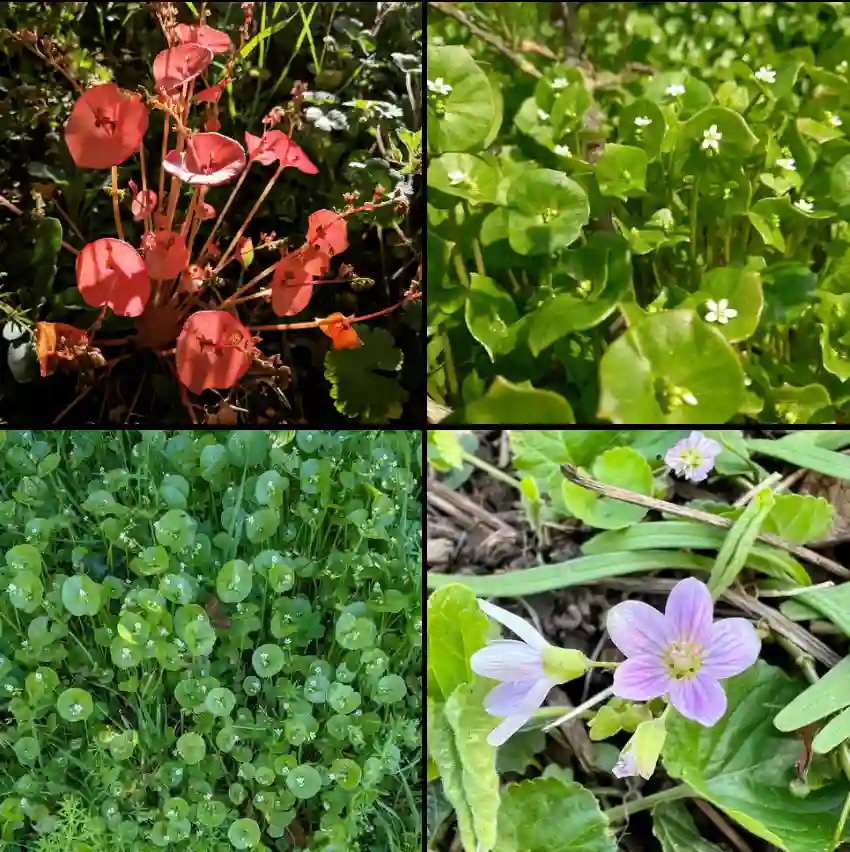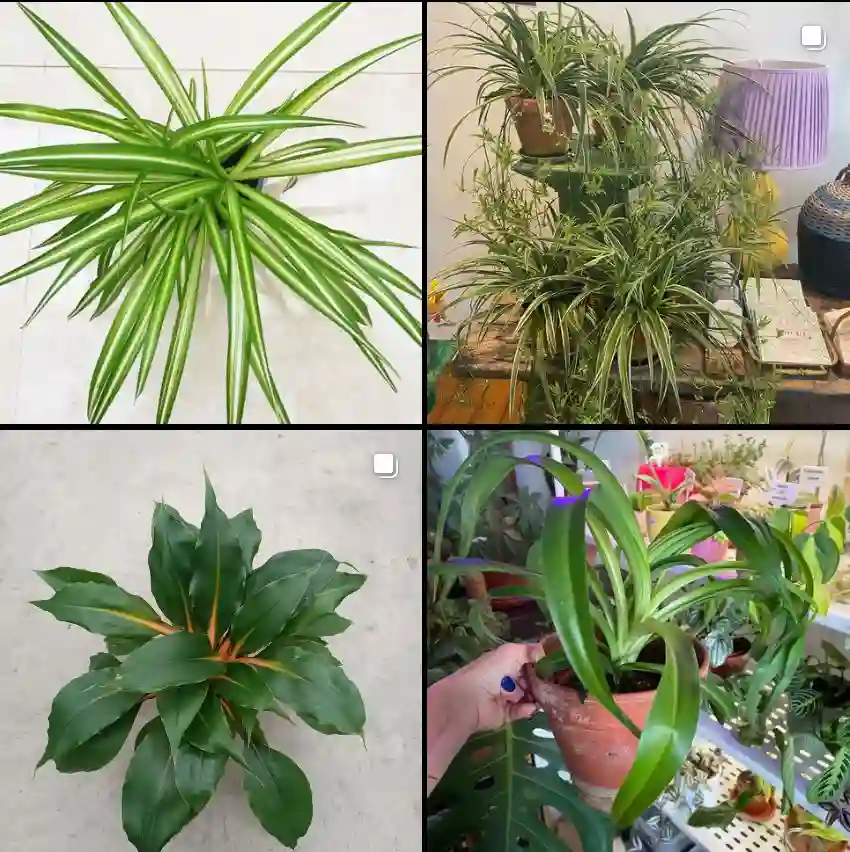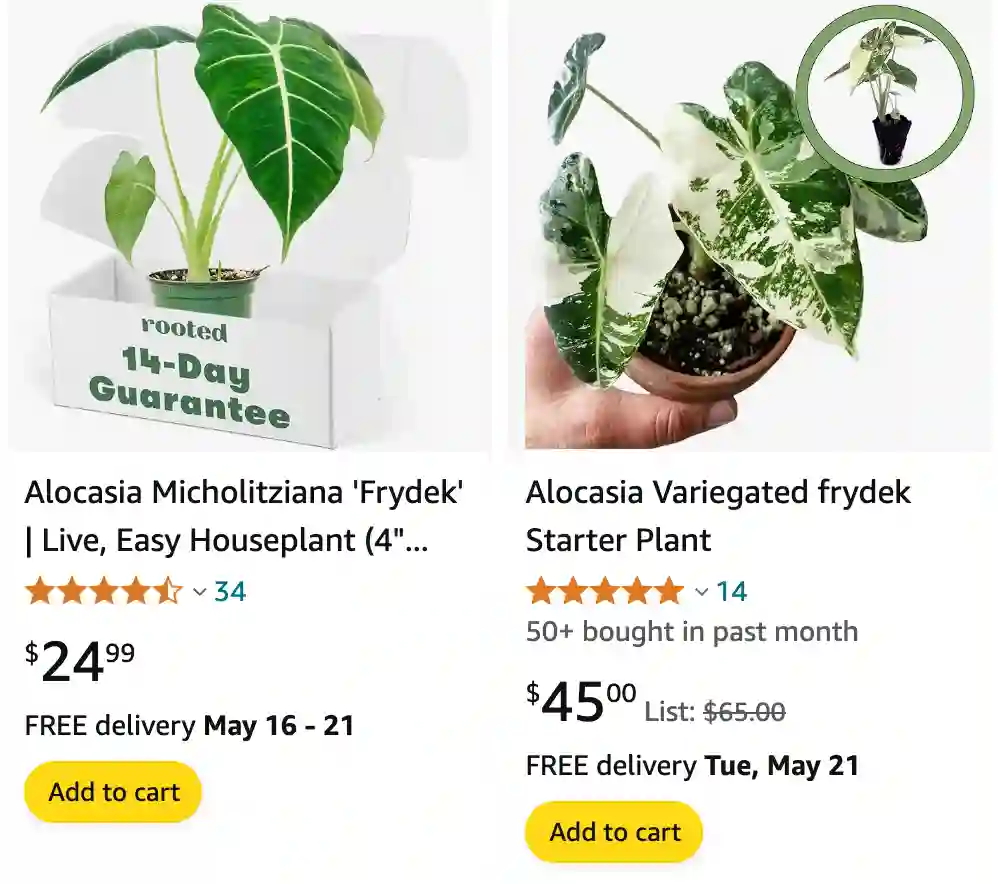
October 11 – Alocasia
"Alocasia, the elephant ear, defines October 11."
Alocasia symbolizes grandeur and uniqueness. You stand out boldly, leaving a lasting impression. Like its dramatic foliage, your presence is striking.
My Fascination with Alocasia: A Deep Dive into the Elephant Ear Genus
Hi, I’m Ferb Vu, and I’ve got a confession to make: I’m utterly captivated by Alocasia. These plants, with their dramatic foliage and intriguing personalities, have completely stolen my heart. Maybe you know them as Elephant Ears – a pretty apt name considering their colossal, striking leaves. But there’s so much more to these tropical wonders than just their size. Join me as I delve into the fascinating world of Alocasia.
Why Alocasia?
What is it about these plants that draws me in? Well, it’s their sheer diversity for one. Every species boasts a unique charm, from the deep, velvety hues of the ‘Black Velvet’ to the mesmerizing metallic sheen of the ‘Frydek’. The textures are equally varied – some leaves are smooth as silk, others are corrugated and textured, almost like reptilian skin.
But it’s not just about looks. Caring for Alocasia is like a constant conversation. They communicate their needs through subtle cues – a drooping leaf might signal thirst, while yellowing edges could indicate overwatering. It’s a rewarding challenge to learn their language and provide the optimal environment for them to thrive.
Alocasia: A Diverse Genus
The Alocasia genus belongs to the Araceae family, a group that includes other popular houseplants like Monstera and Philodendron. Native to the tropical and subtropical regions of Asia and eastern Australia, there are 90 recognized species of Alocasia, each with its own unique characteristics. Here are:
- Alocasia acuminata Schott
- Alocasia aequiloba N.E.Br.
- Alocasia alba Schott
- Alocasia arifolia Hallier f.
- Alocasia atropurpurea Engl.
- Alocasia augustiana L.Linden & Rodigas
- Alocasia azlanii K.M.Wong & P.C.Boyce Plant FAQs: Alocasia Azlanii
- Alocasia baginda Kurniawan & P.C.Boyce
- Alocasia balgooyi A.Hay
- Alocasia beccarii Engl.
- Alocasia boa A.Hay
- Alocasia boyceana A.Hay
- Alocasia brancifolia (Schott) A.Hay Plant FAQs: Alocasia Brancifolia
- Alocasia brisbanensis (F.M.Bailey) Domin
- Alocasia cadieri Chantrier
- Alocasia celebica Engl. ex Koord.
- Alocasia chaii P.C.Boyce
- Alocasia clypeolata A.Hay
- Alocasia cucullata (Lour.) G.Don Plant FAQs: Alocasia Cucullata Hooded Dwarf
- Alocasia culionensis Engl.
- Alocasia cuprea (K.Koch & C.D.Bouché) K.Koch Plant FAQs: Alocasia Cuprea
- Alocasia decipiens Schott
- Alocasia decumbens Buchet
- Alocasia devansayana (L.Linden & Rodigas) Engl.
- Alocasia epilithica Serebryanyi, K.Z.Hein & Naive
- Alocasia evrardii Gagnep. ex V.D.Nguyen
- Alocasia fallax Schott
- Alocasia farisii Zulhazman, Norziel. & P.C.Boyce
- Alocasia flabellifera A.Hay
- Alocasia flemingiana Yuzammi & A.Hay
- Alocasia fornicata (Kunth) Schott
- Alocasia grata Prain ex Engl. & Krause
- Alocasia hainanica N.E.Br.
- Alocasia hararganjensis H.Ara & M.A.Hassan
- Alocasia heterophylla (C.Presl) Merr.
- Alocasia hollrungii Engl.
- Alocasia hypoleuca P.C.Boyce
- Alocasia indica (Lour.) Spach
- Alocasia infernalis P.C.Boyce Plant FAQs: Alocasia Infernalis
- Alocasia inornata Hallier f.
- Alocasia jiewhoei V.D.Nguyen
- Alocasia kerinciensis A.Hay
- Alocasia lancifolia Engl.
- Alocasia lauterbachiana (Engl.) A.Hay Plant FAQs: Alocasia Lauterbachiana Purple Sword
- Alocasia lecomtei Engl.
- Alocasia longiloba Miq. Plant FAQs: Alocasia Longiloba
- Alocasia macrorrhizos (L.) G.Don
- Alocasia maquilingensis Merr.
- Alocasia megawatiae Yuzammi & A.Hay
- Alocasia melo A.Hay, P.C.Boyce & K.M.Wong Plant FAQs: Alocasia Melo
- Alocasia micholitziana Sander
- Alocasia minuscula A.Hay
- Alocasia monticola A.Hay
- Alocasia navicularis (K.Koch & C.D.Bouché) K.Koch & C.D.Bouché
- Alocasia nebula A.Hay Plant FAQs: Alocasia Nebula Imperialis
- Alocasia nicolsonii A.Hay
- Alocasia nycteris Medecilo, G.C.Yao & Madulid
- Alocasia odora (G.Lodd.) Spach Plant FAQs: Alocasia Odora Variegata
- Alocasia × okinawensis Tawada
- Alocasia pangeran A.Hay
- Alocasia peltata M.Hotta
- Alocasia perakensis Hemsl.
- Alocasia portei Schott Plant FAQs: Alocasia Portei
- Alocasia princeps W.Bull
- Alocasia principiculus A.Hay
- Alocasia puber (Hassk.) Schott
- Alocasia puncakborneensis S.Y.Wong & P.C.Boyce
- Alocasia puteri A.Hay
- Alocasia pyrospatha A.Hay
- Alocasia ramosii A.Hay
- Alocasia reginae N.E.Br.
- Alocasia reginula A.Hay Plant FAQs: Alocasia Reginula – Alocasia Black Velvet
- Alocasia reversa N.E.Br.
- Alocasia ridleyi A.Hay
- Alocasia robusta M.Hotta
- Alocasia salarkhanii H.Ara & M.A.Hassan
- Alocasia sanderiana W.Bull Plant FAQs: Alocasia Sanderiana
- Alocasia sarawakensis M.Hotta
- Alocasia scabriuscula N.E.Br.
- Alocasia scalprum A.Hay Plant FAQs: Alocasia Scalprum
- Alocasia simonsiana A.Hay
- Alocasia sinuata N.E.Br. Plant FAQs: Alocasia Sinuata – Sinuate Elephant Ear
- Alocasia suhirmaniana Yuzammi & A.Hay
- Alocasia tandurusa Pram. & A.Hay
- Alocasia venusta A.Hay
- Alocasia vietnamensis V.D.Nguyen & de Kok
- Alocasia wentii Engl. & K.Krause Plant FAQs: Alocasia Wentii – Hardy Elephant Ears
- Alocasia wongii A.Hay
- Alocasia yunqiana Z.X.Ma, Yifan Li & J.T.Yin
- Alocasia zebrina G.W.Johnson & R.Hogg – Plant FAQs: Alocasia Zebrina – Plant FAQs: Alocasia Zebrina Reticulata
Is alocasia toxic to cats?
Absolutely! I learned this the hard way after my cat, Luna, decided the Alocasia I proudly placed on the windowsill looked like a tasty treat. Luckily, I caught her just in time when she was giving it a chomp. Her mouth was foaming a little, and she seemed irritated. Needless to say, the Alocasia is now hanging high on a plant hanger where Luna can’t reach it. It’s a beautiful plant, but I wouldn’t recommend risking your kitty’s health to keep it around.
Can alocasia grow in water?
I actually gave growing an Alocasia in water a whirl a while back. It was doing alright for a while! The roots seemed happy dangling in the container, and there even seemed to be some new growth at first. But after a few months, things started to slow down. The leaves weren’t as perky, and I wasn’t sure if it was getting the nutrients it needed. I eventually decided to transfer it back to a pot with some good quality, well-draining soil mix. It perked right back up after that, so while water propagation might work for a short time, I think soil is the way to go for long-term Alocasia happiness.
Why is my alocasia drooping?
Uh oh, a droopy Alocasia! There are a couple of things that might be making mine sad. It could be thirsty. These plants like consistently moist soil, not soggy, but definitely not bone dry either. Sticking my finger in the pot to check the moisture level before watering usually helps. Also, low light can make the leaves droop. Mine seems happiest in a bright spot with indirect sunlight. If yours isn’t getting enough light, maybe moving it closer to a window (but not right in the sun!) could perk it up. Let’s see if either of those helps!
How often to water alocasia?
The trickiest part about watering my Alocasia is figuring out exactly how often it needs a drink. It seems pretty fussy about not being overwatered, but I don’t want it to dry out completely either. What’s worked for me is sticking my finger into the soil every few days. If the top inch or two feels dry, it’s watering time. I wait until then to avoid drowning the roots. During winter, I water even less often, maybe only once a week or so, since the plant isn’t growing as much. It’s all about finding that happy medium between moist and mushy! Maybe this watering strategy will work for yours too!
Is alocasia toxic to dogs?
You definitely can’t be too careful when it comes to curious pups and houseplants! Alocasia, like my beautiful but mischievous Alocasia Polly, is unfortunately toxic to dogs. I learned that the hard way after my neighbor’s Labrador, Max, decided to take a nibble out of a leaf that had fallen off mine. Luckily, I knew the signs (drooling, pawing at his mouth) and got him to the vet right away. He was fine after a quick checkup, but it was a scary experience. So, to be on the safe side, I keep my Alocasia well out of Max’s reach (and any other dog visitors for that matter) It’s just not worth the risk!
Do alocasias like to be root bound?
My Alocasia seems to be pretty tolerant of being a bit root-bound! I repotted it when I first got it, but since then I’ve noticed it actually puts out new growth even when the roots are filling up the pot. It’s not like it’s going crazy, but there’s definitely some new leaf action happening. I’ve read that unlike some other plants, Alocasias can be okay with snuggly roots for a while. That being said, I’m keeping an eye on it. If the new growth stalls completely or the leaves start looking sad, I know it’s time to give it a new home in a bigger pot with fresh soil. So, in my experience, a little root-bound isn’t the end of the world for my Alocasia, but I definitely don’t want to neglect it completely!
Does alocasia flower?
You wouldn’t believe it, but yes, my Alocasia actually did flower once! It was a real surprise. Alocasias aren’t exactly known for their blooms, and mine is a Polly variety, which seems even less likely to flower than some others. But there it was, this weird little white spathe thing sticking out from the base of a leaf. It wasn’t the most glamorous flower in the world, but it was definitely interesting to see. However, I did read that flowering can take a lot of energy out of the plant. Sure enough, a couple of leaves yellowed and dropped off after the bloom faded. So, while it was cool to see my Alocasia flower, I’m not sure I’m actively hoping for another one anytime soon. Healthy, happy leaves are more my priority!
Does alocasia like to be root bound?
Alocasia, like my own finicky Alocasia Polly, seems to be okay with being root-bound for a while, but it’s not exactly a love story. They’re more like roommates who tolerate each other than best friends.
My Polly has definitely pushed out new growth even when the pot is crowded with roots. It’s not a crazy amount of growth, but there’s some progress. I’ve read that Alocasias can handle being a bit root-bound compared to other plants.
But here’s the thing: while they might tolerate it, I don’t think they necessarily enjoy it. If I leave Polly root-bound for too long, I start to see signs of unhappiness – new growth slows way down, leaves might droop or get dull. That’s my cue to give it a bigger pot with fresh soil.
So, in my experience, a little root-bound isn’t a disaster for my Alocasia, but I wouldn’t wait forever to repot it either. It’s all about finding that happy medium where the roots have some space to breathe but the plant isn’t overwhelmed by a giant pot.
How to plant alocasia corms?
There are two main ways I’ve had success planting Alocasia corms: in water or in a well-draining soil mix. Here’s what’s worked for me:
Water propagation:
- I found a small container, like a shot glass or a cup, and filled the bottom with a thin layer of pebbles or pumice for drainage.
- After gently removing any loose brown outer shell from the corm (this can help speed up sprouting), I placed it on the pebbles with the pointy end facing upwards.
- Just a little water is key here – I only added enough to barely cover the base of the corm.
- Then I found a warm spot with bright, indirect sunlight and placed the container there. Patience is key! It can take weeks for roots and new growth to appear.
Soil planting:
- I used a pot with drainage holes and filled it with a well-draining potting mix. A mix with orchid bark or perlite in it seems to work well for Alocasias.
- Again, I carefully removed any loose outer shell from the corm.
- I planted the corm with the pointy end facing upwards, making sure it was only partially buried – about an inch of the corm should be above the soil.
- I gave the soil a good watering until water ran out the drainage holes, but then I eased off on watering after that. Keeping the soil consistently moist, but not soggy, is important.
- Similar to water propagation, I placed the pot in a warm spot with bright, indirect sunlight.
Whichever method you choose, just be patient and keep an eye on the moisture levels. It can take a while for those new leaves to unfurl, but it’s exciting to see the magic happen!
Why is my alocasia turning yellow?
There are a couple of reasons why your Alocasia might be turning yellow, and I’ve come across a few myself with my own Alocasia Polly. Here are the usual suspects:
- Overwatering: This is the most common culprit. Alocasias like consistently moist soil, but not soggy. If the soil stays wet for too long, the roots can rot, and that leads to unhappy leaves that turn yellow and droop. Sticking your finger in the pot to check the moisture level before watering can help avoid this.
- Light trouble: Alocasias prefer bright, indirect sunlight. Too little light can cause yellowing leaves, while direct sunlight can scorch them. If your Alocasia is tucked away in a dark corner, try moving it to a spot with brighter indirect light. On the other hand, if it’s getting direct afternoon sun, maybe try a sheer curtain to diffuse the light a bit.
- Nutrient deficiency: While not as common, a lack of nutrients in the soil can also make your Alocasia’s leaves turn yellow. If your plant has been in the same pot for a long time, the nutrients in the soil might be depleted. You can try fertilizing it once a month during the growing season with a diluted balanced fertilizer to see if that perks it up.
By checking the watering, light situation, and maybe even considering a little fertilizer boost, you should be able to diagnose the cause of your Alocasia’s yellowing leaves and get it back on track to green happiness!
Do alocasias like humidity?
Absolutely! My Alocasia Polly is like a little drama queen when it comes to humidity. It thrives in a humid environment, just like its tropical rainforest roots. Dry air can wreak havoc on these leafy beauties.
Here’s what I’ve seen with my own plant:
- Crispy edges: When the air gets dry, the edges of my Alocasia’s leaves turn brown and crispy. It’s a clear sign it’s not getting the moisture it loves in the air.
- Droopy leaves: Low humidity can also make the whole plant look a bit sad. The leaves lose their perky perkiness and start to droop.
To keep my Alocasia happy, I try to mimic a rainforest climate at home. Here are my tricks:
- Pebble tray: I put a tray filled with pebbles under the pot and add water. As the water evaporates, it increases the humidity around the plant.
- Grouping plants: Placing my Alocasia near other humidity-loving plants can create a little microclimate of moisture in the air.
- Humidifier: If the air is particularly dry, I might even use a humidifier in the room.
A good rule of thumb is to aim for somewhere between 60% and 80% humidity for your Alocasia. With a little extra moisture in the air, your Alocasia should be putting out those beautiful, lush green leaves in no time.
Do alocasias go dormant?
You bet! Alocasias, like many other houseplants, can definitely enter a dormant state. It can be a bit surprising, especially since these plants are known for their vibrant foliage. But rest assured, it’s a natural part of their cycle, not a sign your plant is dying.
Here’s what I’ve noticed with my own Alocasia Polly:
- Temperature dip: The cooler temperatures of fall and winter seem to trigger dormancy for mine. As the days get shorter and the air gets crisper, growth slows down or stops altogether.
- Less thirsty: During dormancy, my Alocasia doesn’t seem as thirsty as usual. I’ve definitely had to adjust my watering habits to avoid overwatering.
- Leaf loss: Sometimes, dormancy can even involve some leaf loss. Older or weaker leaves might yellow and drop, but it’s not necessarily a cause for alarm. The plant is just focusing its energy on staying alive during this quieter period.
While dormancy can look a little dramatic, it’s important to be patient and not overreact. Here are some tips to help your Alocasia through its dormant phase:
- Reduce watering: Water less frequently than you would during the growing season. Sticking your finger in the soil to check moisture before watering is a good way to avoid overwatering.
- Keep it warm: Try to maintain a comfortable room temperature, ideally around 65-70 degrees Fahrenheit (18-21 degrees Celsius).
- Hold off on fertilizer: Don’t fertilize your Alocasia while it’s dormant. It’s not actively growing, so it doesn’t need the extra nutrients.
With a little TLC, your Alocasia should emerge from dormancy in spring, ready to put on new growth and show off its beautiful foliage once again.
So, if you’re looking for a plant that’s both beautiful and challenging, I highly recommend giving Alocasia a try. With a little patience and care, you’ll be rewarded with a stunning addition to your home and a newfound appreciation for the wonders of the plant kingdom.
If i die, water my plants!
